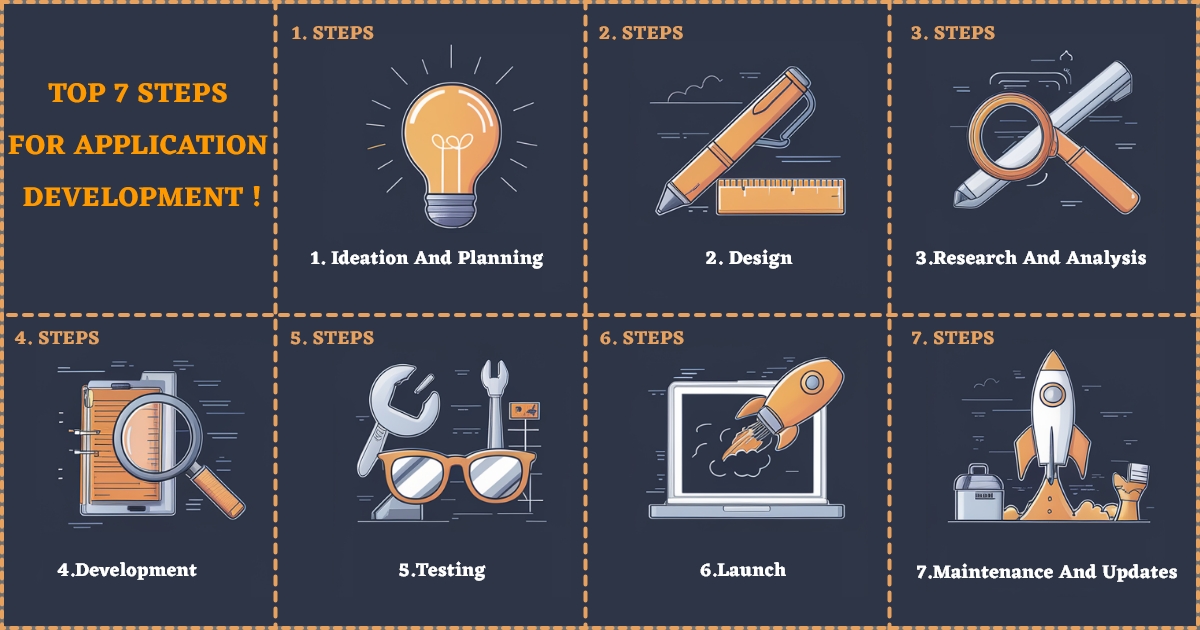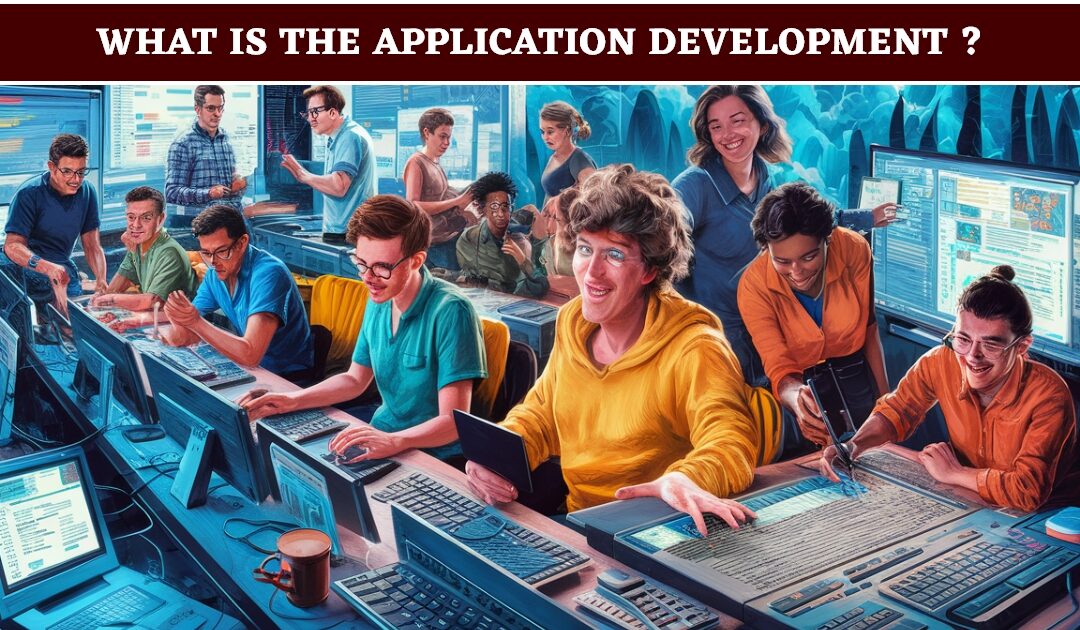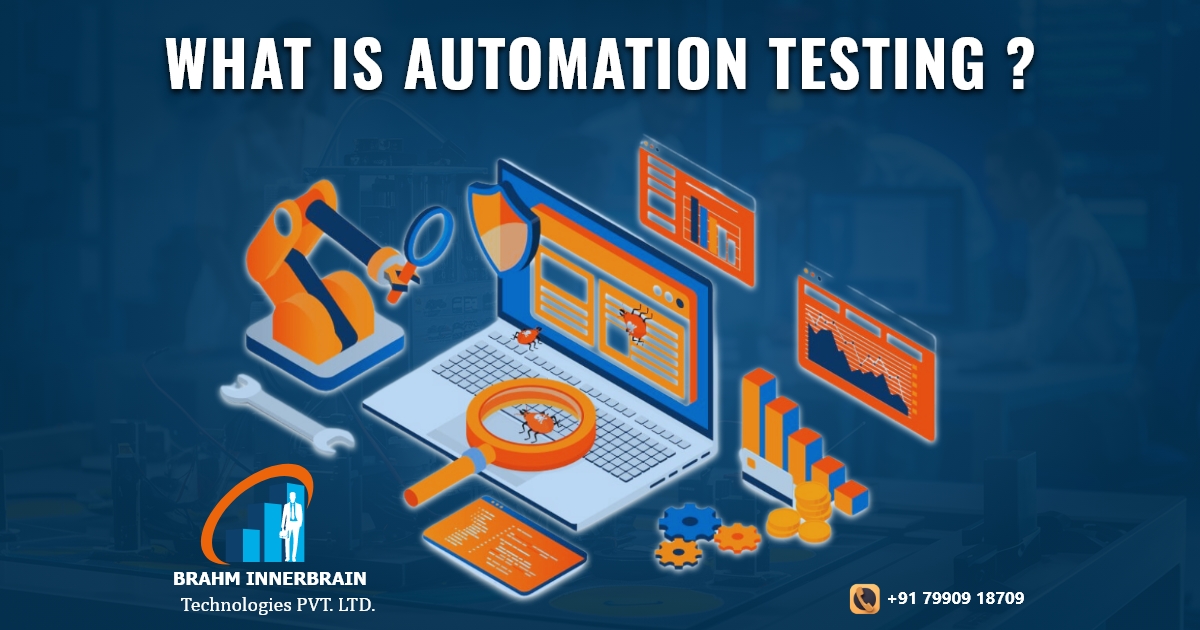Application development is the process of creating software applications that run on various devices, such as computers, smartphones, or tablets. This process involves several stages, from planning and design to development, testing, deployment, and maintenance. As a digital marketing agency, understanding app development can enhance your ability to offer integrated services to your clients.
Top 7 steps for application development!
1. Ideation and Planning
2. Design
3. Research and Analysis
4.Development
5. Testing
6. Launch
7. Maintenance and Updates

Step :-1. Ideation and Planning:-
Ideation and planning serve as the foundational stage in elevating application development, land aying the groundwork for a successful project outcome. This phase begins with conceptualization, where team members brainstorm innovative ideas to address specific user needs or market gaps, fostering creativity and collaboration. Additional components include conducting a competitive analysis, which involves studying existing applications to glean insights on best practices and potential pitfalls, allowing for informed design and feature selection.
Step:-2. Design
Design is a fundamental component that plays a crucial role in elevating the quality of application development, as it directly impacts user satisfaction and engagement. Prototyping is an essential part of this design phase, allowing developers and stakeholders to create interactive models of the application before full-scale development begins. UI/UX Design focuses on crafting an intuitive user interface (UI) that facilitates easy navigation while providing a seamless user experience (UX) tailored to the target audience’s needs.
Step:-3. Research and Analysis:-
Market Analysis involves examining the competitive landscape, identifying key players, and analyzing their strengths and weaknesses. Technical Feasibility examines the practical aspects of the proposed project, including an evaluation of available technologies, frameworks, and tools that can be used to build the application. Requirement Gathering is instrumental in understanding what the stakeholders and end-users expect from the application. Incorporating Regulatory Compliance Research is also essential, particularly for applications that handle sensitive data.
Step:-4. Development
Development is a critical phase in elevating any application development project, as it transforms the conceptual designs into a functional product.This phase is typically divided into two primary components,Here there are two main components one is Frontend Development and second is Backend Development.Frontend development involves creating the user-facing part of the application, focusing on crafting an intuitive and visually appealing user interface (UI) that engages users.Otherside , backend development manages the server-side logic, database interactions, and application functionality. This involves connecting various services, APIs, and third-party tools to enrich the application’s features and functionalities.
Step:-5. Testing:-
Testing is a critical phase in the application development process, serving as a cornerstone to ensure the end product meets quality standards and user expectations. One of the key components is Quality Assurance (QA), which encompasses systematic processes and methodologies aimed at preventing defects by evaluating the application against predefined standards. Some Testing involves real users interacting with the application which can provide invaluable feedback regarding usability, functionality, and overall user experience. Functional Testing, which verifies that each feature operates according to requirements. Security Testing, to identify vulnerabilities and protect user data and Regression Testing, which ensures that recent changes have not adversely affected existing functionalities.
Step:-6. Launch
The launch phase is indeed a critical step in the application development process, as it directly influences the initial reception and long-term success of the application.The Deployment Process is the first essential component, involving the meticulous transition of the application from a development environment to a live production environment.Following deployment, Launch Marketing plays a pivotal role in generating buzz and attracting initial users. Monitoring Setup is crucial to track the application’s performance in real-time.
Step:-7. Maintenance and Updates
Ongoing support is essential for addressing any issues that arise post-launch, including bug fixes, server downtimes, or user inquiries, thereby ensuring a smooth user experience and maintaining user satisfaction. This support is often supplemented by feature enhancements, where regular updates introduce new functionalities or improve existing features based on user feedback, market expectations, or competitive analysis, which helps keep the application fresh and engaging.
Brahminnerbrain Technologies Pvt Ltd stands out as a premier learning platform dedicated to application development, equipping aspiring developers and seasoned professionals alike with the essential tools and knowledge needed to excel in the dynamic world of app creation. Through our tailored courses, workshops, and one-on-one mentorship, we provide deep insights into the various stages of application creation, from ideation and design to development, testing, and deployment. What sets Brahminnerbrain Technologies apart is our unique evaluation framework to track the growth of applications in real time. With a strong focus on practical learning, we ensure that our students gain hands-on experience, empowering them to create innovative, efficient, and high-quality applications that meet modern demands.



